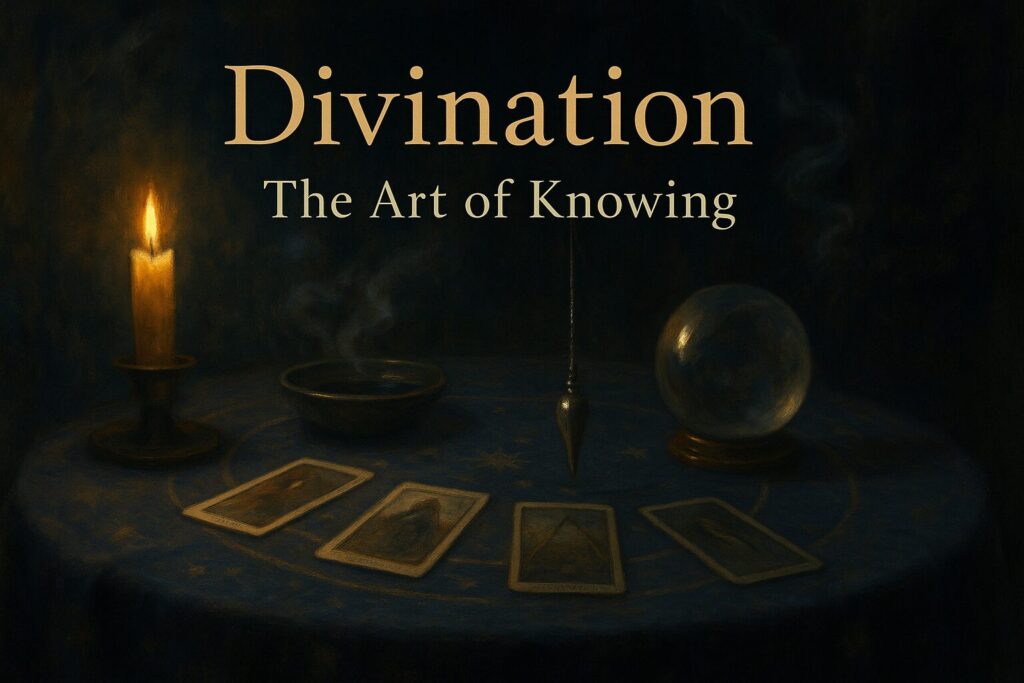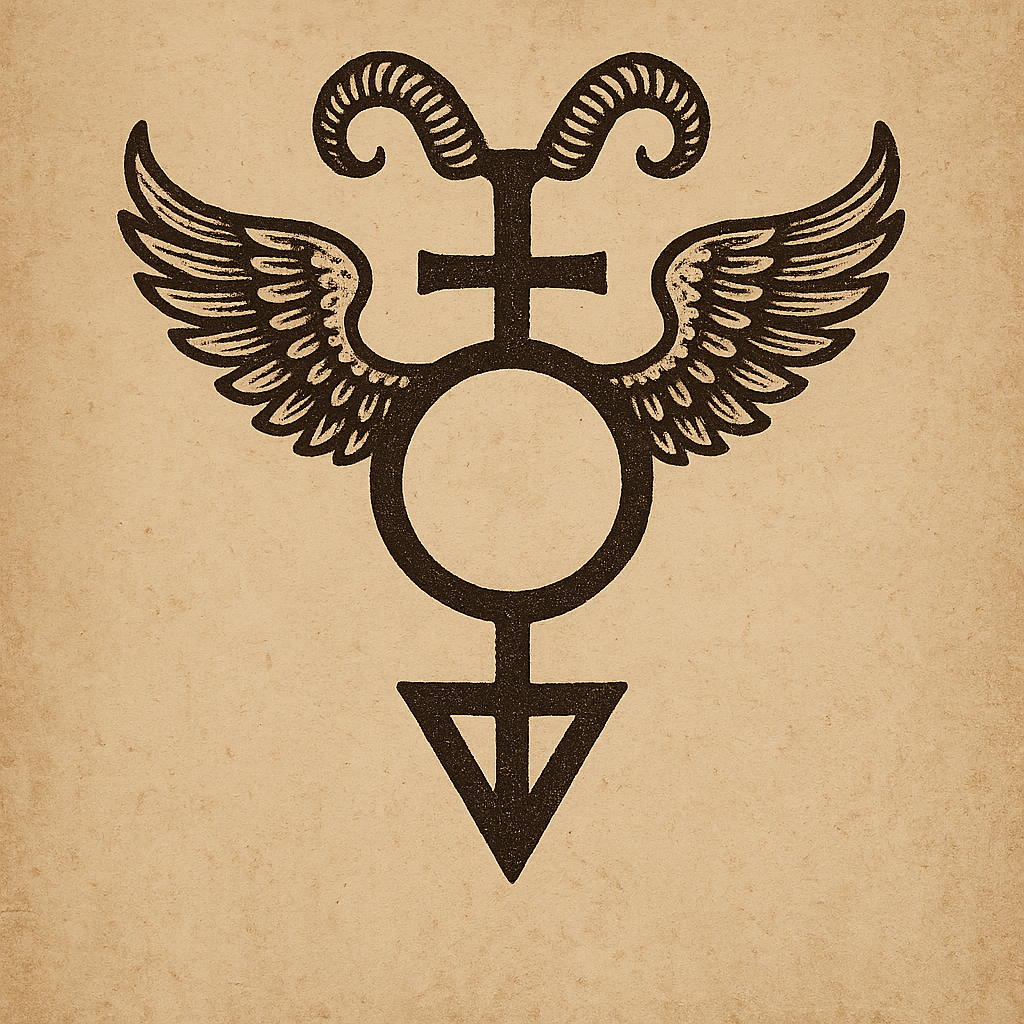
Divination is the art of knowing — not through argument or analysis, but through the living symbols of the world itself. Its essence lies in perceiving pattern, in learning to read the invisible architecture that moves through circumstance, emotion, and matter. To divine is to listen with more than the ears and to see with more than the eyes. It is a spiritual literacy that predates religion and transcends culture, a way of speaking the native language of mystery.
From the earliest civilizations, humanity sought communion with what lay beyond understanding. The Babylonians read the stars and the flight of birds; the Egyptians interpreted dreams and sacred numbers; the Greeks sent their questions to Delphi, where the priestess of Apollo spoke in vapor and vision. Every culture developed its own grammar of omen and correspondence, for all believed that the divine leaves signs woven into the texture of creation. Through time, these oracles evolved: Roman augurs watched the heavens, medieval magi drew sigils and stars, and Renaissance philosophers turned the art toward inward revelation. In the spiritualist movements of the nineteenth century, mediums, seers, and mystics revived these traditions anew, finding in them not superstition but method — a disciplined way to converse with the unseen.
At its heart, divination rests upon a single principle: the universe is not inert, but symbolic. Every event mirrors the whole. A cup’s dregs, a deck’s shuffle, a number’s vibration — all are microcosms that reflect the macrocosm. The diviner stands at the threshold between chaos and meaning, interpreting not fate as fixed, but possibility as revealed. The tools themselves do not speak; they respond. The cards turn to mirror the reader’s inner landscape; the pendulum swings to the pulse of intuition; the smoke curls according to the breath of unseen currents. Thus the practitioner learns not prediction but participation. To divine is to engage in dialogue with the living field of reality.
Over centuries, a constellation of divinatory forms emerged, each corresponding to a different faculty of knowing. The symbolic arts — tarot, oracle decks, runes, astrology, and numerology — rely upon pre-established systems whose symbols form languages of the soul. The material arts — tea leaves, wax, water, crystal, smoke — depend upon vision and imagination, allowing the unconscious to project its truth upon shifting forms. The kinetic arts — pendulums, dowsing rods, and automatic writing — translate bodily micro-movements into messages, extending intuition into gesture. The somatic and psychic arts — clairvoyance, mediumship, dreamwork — remove the intermediary altogether, making the practitioner herself the instrument. Each mode is valid, each tuned to different temperaments: the scholar may prefer the structured logic of numerology, the poet the mirror of the scrying bowl, the healer the subtle pulse of the pendulum.
Divination does not stand apart from magic; it moves beside and beneath it. Where spellcraft directs energy toward change, divination reveals the conditions through which change must pass. The witch consults the cards before the ritual, seeking to understand the unseen currents surrounding their working. The alchemist reads the alignment of stars or the color of flame to discern the readiness of transformation. The healer pendulates above herbs and stones to test their resonance with a patient’s need. Mediums, too, share this borderland, blending communication with the dead or the spirit world into forms of symbolic insight. To divine is therefore both preparation and revelation — diagnosis before prescription, map before journey.
In the craft traditions that gave rise to Wicca and modern witchcraft, divination is not a side pursuit but a core sacrament. It aligns the witch with the rhythm of the natural and astral worlds, informing the timing of Sabbats, the phases of the Moon, and the cycles of spellwork. Within covens, the role of seer or high priestess often includes the duty of vision: to read omens for the circle, to interpret dreams that come between rituals, to listen for what the gods, guides, or ancestors might whisper. In this context, divination becomes a collective act of attunement, uniting intuition with community and mythic structure. It is both personal reflection and sacred service.
Yet it also exists as a separate discipline, demanding patience, study, and ethical clarity. The diviner must learn to suspend bias, to hold space without imposing will. True reading empowers rather than enslaves; it clarifies rather than commands. The seeker remains free, the symbols merely mirrors in which choice is revealed. For this reason, the training of a diviner is not only technical but moral — requiring humility, discernment, and the courage to speak truth even when it disrupts comfort.
Among the many paths, a few have become pillars of the modern art. Tarot stands as the high form — a synthesis of mysticism, psychology, and storytelling whose seventy-eight archetypes chart the evolution of the soul. Oracle cards offer a freer current, responsive and personal, shaped by theme and intuition. Numerology renders life as vibration, translating names and dates into spiritual mathematics. The pendulum gives voice to the subconscious, its swings revealing what the conscious mind resists. Scrying trains the visionary gaze: in mirror, flame, or water, reflection dissolves into revelation. The reading of tea leaves turns domestic ritual into prophecy, finding meaning in what remains after pleasure. Dowsing rods and earth wands trace unseen energy lines through soil and spirit alike. Casting runes or lots connects the reader to ancestral wisdom, interpreting pattern as fate’s living language. And beyond them all, the sensitives and mediums listen directly — vessels through which the subtle realms may speak.
In the modern era, these arts have adapted to new forms: tarot apps and digital oracles extend the archetypes into the collective field of technology; hybrid systems weave astrology, numerology, and psychology into holistic maps of identity. Yet the essence endures unchanged. Whether performed beside a candle or on a glowing screen, divination remains an act of reverence — a way of remembering that the world is alive with signs and that every heart, when quiet enough, is an oracle.
Ultimately, to divine is to practice attention. It is the sacrament of listening, the mirror of the divine conversing with itself. The cards, the pendulum, the flame — these are but instruments; the true oracle is within. When we turn toward it with devotion, we find that every shadow and spark speaks a single truth: the universe longs to be known, and through us, it comes to know itself.

